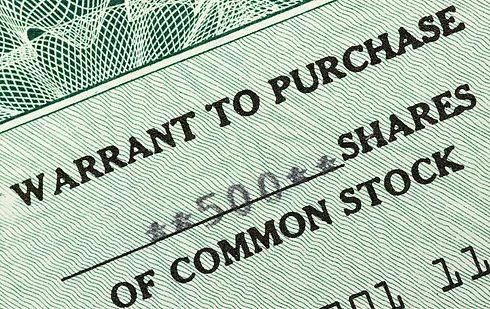How Promoters Inflate Their Shareholding Using Loopholes, 4 new ways

How Promoters Inflate Their Shareholding Using Loopholes, 4 ways
In stock analysis, the percentage of a company’s shares held by promoters is a crucial element. This is especially important in economies like India, where families own most of the enterprises. This is because the ownership level often serves like a sign of promoters’ Trust in the business and the level of leadership control over the entity.
A corporation with a large promoter stake often depicts a scenario in which the promoters presume a bright future for the company and want to profit from its success. On the other hand, when promoters do not discern their companies’ development prospects promising, they sell their stakes or the entire company to competitors.
However, if the promoters of a company with strong Financial possibilities end up with a low stake in the company for whatsoever reason, it often ends in aggressive takeover wars. Competitors begin buying shares on the open market or from major public owners to gain control of the firm.
In addition, promoters with a small interest in the firm may find it challenging to put their leadership vision into action since they will need the cooperation of other main shareholders to agree on important board resolutions.
As a result, it is in the promoters’ better interests to hold large ownership of the firm.
Promoters employ a variety of strategies to keep a large stake in the company:
Continue to buy their company’s stock on the open market.

When a corporation needs money, it prefers to borrow money from lenders rather than Issuing additional shares through follow-on public offerings (FPOs) or Qualified Institutional Placements (QIPs). This is because Issuing extra shares leads to Equity Dilution, which probably lowers their shareholding in the company.
These seem to be actual actions that promoters repeatedly take to protect their ownership in the firm.
However, our experience with hundreds of companies for our website and personal investment has displayed that promoters often go above and beyond these basic approaches. We’ve seen multiple cases when promoters take advantage of several techniques, hard structures, and complex transactions to control more stakes than they own or give the impression that they hold a larger share in the firm than they do.
Typically, the main aim of these transactions is to:
- Increase their investment in the firm by using the company’s money (i.e., public shareholders).
- They are using corporate Funds (Trusts) to create the impression to the outside world that they still control a big investment in their firm, even though they may not.
- They use sophisticated transaction approaches(like ESOPs and stock warrants) to gain preferential treatment from the firm over other shareholders to gain more shares at a lower cost than the market or what is available to other shareholders. As a result, they can raise their investment in the firm at a lesser price.
In this article, we’ll look at several examples of promoters who have used these techniques to grow their company’s shareholding. These situations probably serve like real-life examples and analogies for investors to learn from, be careful of, and avoid hazards when doing their business.
1) Raising promoters’ stake in the firm by using company money (public shareholders).
According to our evaluation of several companies, this is one of the most common ways employed by promoters to inflate their shareholding in the firm (A). The following are the important phases in such transactions:
Transfer the company’s (A) funds to another entity (B). This entity (B) probably be a corporate subsidiary or a promoter group entity.
If the entity (B) is a subsidiary of the firm, money can be given to it in an investment in B’s shares, a Loan, or an Advance to B.
If the entity (B) is part of a promoter group, the funds usually are handed to B in the form of a Loan or an Advance.
After receiving the funds, the entity (B) purchases shares of the firm (A) on the open market or from other major shareholders.
Following that, the promoters present a phenomenal control in the firm by including the shares of the company (A) owned by the entity (B) in the Promoters’ Category (A).
As a result of these transactions, promoters present a larger stake in the firm (A) to the stock markets. On the other hand, an investor would note that the promoters’ Funds to expand their ownership are given by the firm (A).
This money belonged to all of the company’s owners, which includes promoters and public shareholders, according to their proportionate holdings (A). However, the promoters now stand to gain from all of the firm (A) shares acquired with this money through the corporation (B).
Investors will notice that the money granted from the corporation (A) to the entity (B) stands with B for a long time. If the money is being invested in B’s (a subsidiary’s) equity shares, there is no need for B to repay it.
Even if the funds granted by the firm (A) to the entity (B) are in the form of loans or Advances, the promoters being the company’s controllers, do not demand repayment from B. In other situations, promoters works like controllers of the firm (A) force A to send fresh money to B for B to repay past debts while still keeping the money in one form or another.

Let’s look at some examples to assist investors in understanding how these transactions take place in company annual reports. These examples will aid investors in comprehending the areas of annual reports where they will find the facts needed to identify these transactions. An investor will be better equipped to find out similar transactions in the company, and they will be studying in the future if they dig further into these situations.
Instead of focusing on the names of the entities mentioned in the article, investors should focus on the concept and system of transaction structuring to understand the money flow better.
A) Raising promoters’ shareholding by buying shares using subsidiaries of the company:
i) Escorts Ltd:
Escorts Ltd is an Indian firm that makes tractors and agricultural gear and construction and railroad equipment. An investor sees that the firm has before displayed shares of the company held by its subsidiaries under the promoters’ ownership category when reviewing its history and the pattern of promoters’ shareholding in the past.
During FY2011, an investor found that two businesses possess most of the promoters’ entire ownership in the company, which was 27.57 percent on September 30, 2011.
Escotrac Finance & Investments Private Limited (ESCOTRAC) owns 12.83 percent, while Escorts Finance Investment & Leasing Private Limited owns 6.50 percent (EFILL)
When an investor examines the ownership form of ESCOTRAC and EFILL in the FY2011 annual report, they find out that Escorts Ltd owns most of both companies.
Escorts Ltd holds 49.81 percent of each of ESCOTRAC and EFILL directly and more shares of these companies through cross-holding, i.e., 49.81 percent shares owned by ESCOTRAC and EFILL of each other, according to an investor.
Understanding the impact of such cross-holding probably be challenging at times. As a result, we think of them in terms of end beneficiaries to keep things simple. We expect two owners in the Case of ESCOTRAC and EFILL:
Outside shareholders and Escorts Ltd Outside owners possess 0.38 percent of the shares of both ESCOTRAC and EFILL. 0.38 = 100 – 49.81 (direct holding of Escorts Ltd) – 49.81 (Crossholdings of ESCOTRAC & EFILL in each other)
Furthermore, outside shareholders indirectly possess 0.38 percent of the cross-holding, i.e., external shareholders have rights to 0.38 percent of the interest in each other held by ESCOTRAC and EFILL, which equals 0.19 percent (= 49.81 percent * 0.38 percent).
As a result, the total shareholding of outside shareholders in ESCOTRAC and EFILL is equal to the sum of direct shareholding of 0.38 percent and indirect shareholding of 0.19 percent, which equals 0.57 percent (= 0.38 + 0.19)
As a result, an investor should be aware that Escorts Ltd owns 99.43 percent (= 100 – 0.57) of both ESCOTRAC and EFILL, while outside shareholders possess 0.57 percent.
In light of this, when an investor examines the 19.33 percent shares of Escorts Ltd held by ESCOTRAC and EFILL, they find out that Escorts Ltd owns 19.21 percent of these shares (19.21 percent = 19.33 percent * 99.43 percent). In comparison, outside shareholders own only 0.12 percent (0.12 percent = 19.33 percent * 0.57 percent).
As a result, the 19.21% shares, basically controlled by Escorts Ltd through ESCOTRAC and EFILL, seem to be listed under promoter holdings in September 2011.
Furthermore, when an investor searches for the origins of the monies used by ESCOTRAC and EFILL to purchase Escorts Ltd shares, they find that these funds were given by Escorts Ltd in the form of Equity and other investments.
An investor may see that Escorts Ltd has made the following investments in ESCOTRAC and EFILL based on the initial disclosures:
ESCOTRAC: Rs 98.48 cr
Preference shares: Rs. 58.44 crores (= 48.44 + 10) and Equity: Rs. 40.04 crores
EFILL: Rs.83.82
Rs. 40.00 crores in Equity and 43.82 crores in preference shares
As a result, an investor notices that Escorts Ltd seems to have made the investment in 182.30 crores (= 98.48 + 83.82) in ESCOTRAC and EFILL, which has been used by these businesses to purchase Escorts Ltd shares.
When an investor evaluates last annual reports, they see that in earlier years, if Escorts Ltd gave loans to other entities/subsidiaries, it used to display how other companies used the Cash. For example, Escorts Ltd reported in its FY2003 annual report that it had made investment the money it had paid to ESCOTRAC and EFILL in Escorts Ltd.
As a result, an investor display that in the cases of ESCOTRAC and EFILL, funds granted by Escorts Ltd were used to purchase shares of Escorts Ltd, which were then listed like promoter holdings.
In the Case of such cross-holdings of company shares, it is recommended that an investor direct further due diligence determine the effective ownership of several parties. If there are questions, it is recommended that you contact the firm to clear things up.
ii) Ion Exchange (India) Ltd:
Ion Exchange (India) Ltd is a corporation based in India that specializes in water treatment facilities, wastewater treatment, sewage treatment, packaged drinking water, saltwater desalination, and other things. An investor observes a few subsidiaries and associate companies of Ion Exchange (India) Ltd on the list of companies in promoters’ shareholders on March 31, 2019, when analyzing the shareholding pattern of Ion Exchange (India) Ltd.
The following companies owned shares of the parent company on March 31, 2019:
Ion Exchange (India) Ltd.’s 1.73 percent interest (253,803 shares) was owned by Aqua Investments (India) Limited (subsidiary, 99.42 percent ownership).
Watercare Investments (India) Ltd is a company based in India (subsidiary, 99.43 percent holding). Ion Exchange (India) Ltd. owned 1.26 percent of the company (184,071 shares).

Ion Exchange Financial Products Pvt Ltd (Associate Company, 24.02% holding) owned a 0.34% stake (50,422 shares) of Ion Exchange (India) Ltd.
We feel that situations in which parent businesses hold their own shares through subsidiary companies and report them like promoter holdings provide the impression of a more large promoter shareholding than is the Case.
For instance, in the case of Ion Exchange (India) Ltd, we can notice that the promoter ownership was around 40% on March 31, 2019, with roughly 3% controlled by two subsidiary companies. The promoters do not own 100% of the subsidiary companies. All Ion Exchange (India) Ltd shareholders own these subsidiary companies in percentage to their holdings.
Consequently, the promoters maintain just 40% of these companies, and only 1.2 percent (= 3 percent * 40 percent) of the 3 percent interest owned by these subsidiaries belongs to the promoters. As a result, when the shareholding of these two subsidiaries is taken into Account, the effective stake of promoters falls to 38.2 percent (= 40 percent – 3 percent + 1.2 percent) from the declared stake of about 40 percent.
Similarly, suppose we modify the promoters’ position reported on March 31, 2019, for shares owned by the affiliate business (0.54 percent) and the Employee Welfare Trusts (2,662,914 shares, 18.16 percent stake). In that Case, the promoters’ effective holding will fall further below the stated stake of 40%.
As a result, we feel that when evaluating the promoters’ shares in such entities, investors should make appropriate modifications on their own.
B) Increasing promoters’ shares through company loans and Advances to promoter group entities:
i) National Peroxide Ltd (Wadia Group):
National Peroxide Ltd is a subsidiary of the Wadia Group and India’s largest hydrogen peroxide (H2O2) factory. An investor finds that one of the promoter group companies, Macrofil Investment Ltd (MIL), raised its investment in National Peroxide Ltd while reading the FY2017 annual report.
Macrofil Investments Ltd extended its holding in National Peroxide Ltd by 9,441 shares (=7311+2108+22) in FY2017, according to an investor.
Simultaneously, the investor sees that National Peroxide Ltd has issued Marcofil Investments Ltd a Loan of Rs30 crore that was not repaid in FY2017.
Money is a fungible commodity that an investor would enjoy. As a result, when National Peroxide Ltd (NPL) gives loans to Macrofil Investment Ltd (MIL) and MIL buys NPL shares, it equates to NPL funding MIL’s acquisition of its shares.
Because money is fungible, this equates to the promoter group borrowing money from National Peroxide Ltd (NPL) to grow their ownership position in the firm.
2) Using employee welfare trusts to display promoters owning more shares than they own in reality.
Investors may have noticed that corporations often establish employee welfare trusts. These trusts own stock in the corporation. Often, the main aim of these trusts is to store shares that may be divided to workers being a result of the exercise of stock options (ESOPs).
In most situations, the business itself is the beneficiary of these trusts, i.e., the shares of the company owned by welfare trusts pertain to the whole company, i.e., all shareholders, both promoters and the general public, have a claim to these shares in percentage to their holdings in the firm.
However, there have been cases when promoters have put all shares held by welfare trusts in the promoters’ class, resulting in the public disclosure of an important larger promoters’ shareholding than their real holdings.
A) Escorts Ltd:
According to Escorts Ltd’s ownership pattern, by September 30, 2019, the promoters maintain 40.25 percent of the firm, holding 4,93,33,680 shares out of a total of 12,25,76,878 shares.
When an investor examines the specifics of the promoter holdings, they will see that Escorts Benefit and Welfare Trust owns 27.49 percent (3,37,00,031 shares) of the above 40.25 percent (4,93,33,680 shares).
It means that the benefit of the Trust’s shares goes to the company, i.e., all of the business’s shareholders in percentage to their holdings.
There are several more factors that suggest that the Trust’s ownership belongs to the firm rather than the promoters:
a) In the annual report, the firm lists the shares owned by the Trust like treasury stock, indicating that the corporation owns its own stocks through the Escorts Benefit and Welfare Trust.
b) Except for the shares owned by Escorts Benefit and Welfare Trust, the business declares dividends on all shares.
c) When computing the company’s earnings per share for the year, the Trust’s shares are omitted.
d) When the Trust’s shares are sold, the receipts are received by the company in the form of Cash inflow.
Furthermore, if the firm sells the Trust’s shares on the open market and these shares are acquired by non-promoters/the general public, the promoters’ control will continue to decline.
B) Ion Exchange (India) Ltd:
When an investor examines the changes in the promoters’ ownership of Ion Exchange (India) Ltd over time, they will notice that the promoters used to include the shares owned by the employee welfare trust when declaring their position in the firm until September 30, 2019.
However, on December 31, 2019, the firm has corrected its disclosure, and the shares held by employee welfare trusts are now listed individually under the “Non-Promoter-Non-Public” category, which seems to be the right categorization.
When comparing the company’s stock market filings for ownership patterns on September 30, 2019, and December 31, 2019, an investor notes that promoters’ shareholding has decreased from 44.04 percent in September 2019 to 27.01 percent in December 2019.
The segregation of shares owned by employee welfare trusts (16.18 percent ownership) under the “Non-Promoter-Non-Public” category is the main cause for the important drop in promoters’ shareholding.
As a result, an investor would recognize that if they base their analysis on the last disclosed promoters’ shareholding of 44.04 percent, they will make a mistake.
Before making an investment choice, an investor should always pay attention when analyzing the holdings of promoters so that she is aware of the real interest owned by the promoters in the firm.

3) Using employee stock options to get shares from the corporation at a lower cost (ESOPs)
Employee stock options (ESOPs) are often given to employees in the form of compensation for outstanding performance. Employee stock ownership plans (ESOPs) allow workers to purchase company stock after working for the firm for a set period of time. Employees are given these shares at a set price, regardless of the market price at the time the ESOPs are exercised or converted into shares.
ESOPs seem to match management motivations with those of shareholders since strong employee performance leads to favorable Financial results for the firm, which leads to a higher stock price. Shareholders and workers who now own ESOPs will profit from a higher stock price.
Employee stock ownership plans (ESOPs) are usually found to be less expensive than the current market pricing. As a consequence, employees are pleased to gain shares from the firm at a cheaper cost and subsequently profit by selling them at a higher cost on the open market.
This approach (ESOPs) is sometimes used by company promoters to get a large number of shares at a low price.
The promoters gain greatly from this ESOP allocation since it saves them the substantial expense of acquiring shares on the open market. Investors will realize that if promoters begin purchasing shares on the open market, the market will interpret this a good signal about the company’s future prospects, and the price of the company’s shares will rise dramatically.
4) Using stock warrants to gain shares from the firm at a lower price.
The preferred assignment of warrants is one of the most popular ways for promoters to expand their shares in the firm and benefit from their “priority lane” access.
Stock warrants are a type of option in which the person receiving the warrants (allottee) pays a small fee to the corporation when the warrants are issued.

In return, the allottee receives the right to approach the firm at any point during the next 18 months, pay the remainder, and get the shares at a predetermined price stated at the time of warrant issuance. Regardless of the market price of shares at the time of stock warrant exercise, the corporation must issue shares to the allottee at the agreed price. i.e., when they are converted into shares.
Companies distribute stock warrants to favored parties (usually promoters) using a formula based on the last six months’ share price levels. Warrants are allotted by deducting 25% of the value at the time of assignment. When the warrant holder changes them into equity shares, the remaining 75% of the money is collected.
The holder of a stock warrant (in this example, the promoters) has the right to subscribe for company shares and expand her interest in the firm at a fixed price without having to worry about the regular share price increase that occurs when promoters gain shares on the open market.
Many times, the argument is made that if the share price drops after the warrants are issued, the promoters will lose the first 25% of the money they paid. As a result, they are taking a risk, which justifies the large return in the Case of warrants.
However, the entire gimmick of paying 25% now at the time of stock warrant allotment and then maintaining the option to pay 75% at the time of exercise, which the promoters would determine based on whether the promoters are generating money or not at the time of exercise, seems to us to be a ruse.
If the promoters pay 25% now and then let the stock warrants expire because the market price is regularly lower than the exercise price in the future, it usually suggests that the promoters did not plan to put 100% of their money into the firm. Or that the corporation did not need the entire sum of money.
It’s possible that the firm only required 25% of the money, which promoters put in through stock warrants, and the ability to buy shares at a discount in the future is the payback that promoters would receive in return for donating 25% to the company. The remaining 75% may not be needed at all by the firm.
However, we believe that if the promoters want to make an investment in the company, the company should issue additional shares to them at the current market price and receive 100% of the funds upfront, rather than allowing the promoters to speculate on the company’s share price by holding back 75% of the Funds, in the case with stock warrants.
We think that issuing warrants to promoters is an effective approach for non-promoter shareholders to transmit economic value to promoters.
Many times, the reasoning has been presented that warrants are assisting corporations in raising capital from promoters in tough times when other sources of funding are unavailable.
In the instance of Granules India Ltd, however, the promoters are funding their warrant buy by taking out loans and pledging their stake in the company disclosed by the promoters in a conference call with experts in October 2016.
If an investor examines the sequence of events/activities, it seems that promoters are exploiting the economic value of Granules India Ltd shares to gain Cash in order to purchase further shares at a discount to the market price.
If the promoters are unable to repay the loans taken out by pledging shares, the lenders’ sale of those shares will result in a considerable drop in the share price of Granules India Ltd, reducing the wealth of all shareholders promoters, and non-promoters alike.
Moreover, promoters who take out such loans are incentivized to get large salaries from the company and dividend distributions despite negative free Cash flows (dividend paid by debt) in order to repay these debts.
Regardless of whether the loans are in the name of promoters or not, the firm and its shareholders end up suffering the cost and consequences of such loans in one way or another. The advantage of these loans, on the other hand, is mostly enjoyed by promoters since it results in an increase in their shareholding in the firm.
As a result, we feel that corporations issuing warrants to promoters and then the promoters exercising the warrants by paying from money acquired by pledging shares in the company is not an acceptable practice. Investors should be well-versed in the dynamics that arise in such circumstances.
Overall, a strong promoter share in a firm is considered a sign of strength by investors, which is especially true in economies like India, where most enterprises are family-owned. In such a situation, the Promoters want to keep their shareholdings high p in order to maintain strict control over the company’s operations and avoid aggressive takeovers.
If the Promoters of a company wind up with a low shareholding for any reason, they will most probably expand their shareholding by acquiring shares on the open market. However, an investor would observe from the last explanation that promoters occasionally utilize several strategies to expand their stake in the firm.
They may display promoter ownership in employee benefit trusts held by the corporation on occasion. Other times, Promoters use business funds to purchase company stock through complicated transactions involving subsidiaries or Promoter-owned entities.
The promoters may also employ instruments like warrants, ESOPs, and other methods to purchase shares at a lower cost through the preferred route.
An investor should research the Promoters’ shareholdings in entities and learn about their real holdings and the tactics used by the Promoters to gain those shares. This type of evaluation will give the investor a lot of information about the company’s management quality.
edited and proofread by nikita sharma




